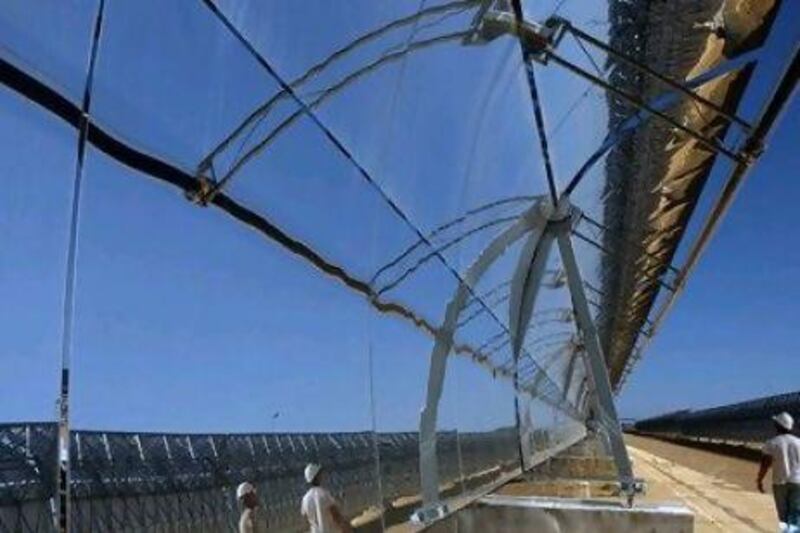Oman is to be the Gulf's testing ground for a technology that uses solar power to coax oil from the ground.
Petroleum Development Oman (PDO), the state oil company, plans to use solar panels to heat oilfields, making it easier for the hydrocarbons to reach the surface.
"The oil is not in a beaker in a lab, the oil is 2,000ft underground," said Rod MacGregor, the chief executive of GlassPoint, the California company that is building a 7-megawatt array in Oman. "Imagine a cubic mile of rock and you have to heat it up."
The challenge of making old oilfields productive is a growing one for producers, who have injected everything from live bacteria to industrial emissions underground.
Of all the Gulf nations, Oman has been the most eager to bring solar power to its oilfields. Production there peaked about a decade ago, and since then the sultanate's priority has been on finding methods to bring heavy oil - the dregs of fossil fuels - to the surface.
Today, Oman burns natural gas to make the steam that floods the reservoir, making the oil thinner and helping to loosen it from the rock.
That is costly for Oman, which must import natural gas for its own supplies, along with every other nation in the GCC apart from Qatar. By replacing some of that with solar energy, Oman can free up gas to power metal smelters or produce petrochemicals - industries the sultanate hopes to expand.
Two concerns have held back oil producers from unleashing solar power in oilfields: the costs involved and the limited number of hours of sunlight.
The price for panels that concentrate the sun's power using mirrors was, until recently, about quadruple that of natural gas. And oilfields are often in locations that are also dusty, creating a barrier between solar panels and the sun, and threatening to damage the panels.
As recently as June, BrightSource Energy, another solar power company, encountered what it called "significant cost overruns" while building a solar oil recovery project in California.
But Mr MacGregor claims his company has reduced costs so significantly - both by using a different type of solar panel and by enclosing its array inside a greenhouse to keep out the dust - that it rivals gas.
Another concern has been that solar panels will work only while the sun is shining, making oil production erratic and posing a risk to pipes and other sensitive equipment subjected to stretches of hot and cold.
But last year engineers from PDO and Shell, a stakeholder in Omani concessions, published a study showing that intermittent solar power could still work.
"Solar-generated steam provides a viable alternative," the engineers wrote.
The Omani pilot, scheduled to come online at the end of next year, will combine solar and gas at an oilfield near the Yemeni border.
After a year PDO can decide to increase the one-fifth solar contribution or introduce it to other oilfields.
The pilot would make the sultanate only the second country in the world, after the US, to use solar power in oil production.
Mr MacGregor has pitched the technology to Abu Dhabi and hopes other nations in the region will follow Oman. "We're in discussions with pretty much every oil producer in the region," he said during a recent visit to Oman. "As oilfields age, you'll see more and more solar."





